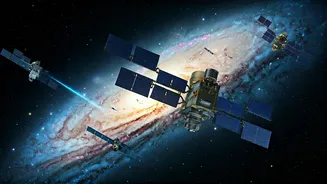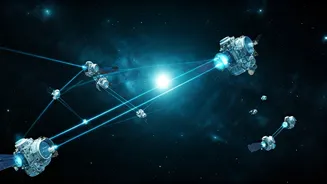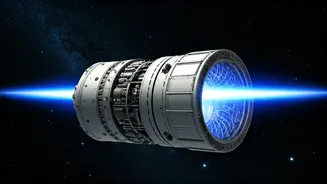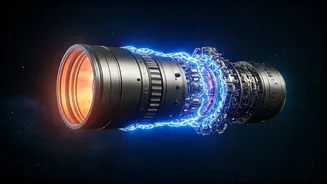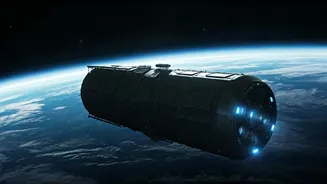Satellite Revenue Shifts
The satellite industry is undergoing a significant transformation, particularly in revenue streams. The shift from traditional video services to other
data-driven applications is reshaping financial models. Experts predict that by 2034, the sources of revenue for satellite operators will look considerably different compared to previous years. This change indicates a move toward data-centric services, reflecting the growing importance of data in various sectors like communications, earth observation, and scientific research. The declining influence of video suggests the need for satellite companies to adapt by investing in and supporting data-intensive applications. It is essential for these companies to strategize to align with future market demands by focusing on innovative data solutions, which would eventually determine their financial success in the long run. By 2034, this industry realignment is expected to have a considerable effect on how the space sector functions and generates income.
New Space Ventures Emerge
The space industry is witnessing the emergence of new companies with innovative goals. One notable example includes a startup that is developing space-based missile defense systems using their own funding. This signifies a trend of private sector involvement in areas previously dominated by government initiatives. These startups bring fresh ideas and approaches to solving some of the complex challenges in space. The entry of these new players shows the increasing commercialization of space and the willingness of entrepreneurs to invest in complex technologies. These ventures not only expand the technical capabilities of space exploration, but also introduce new methods of financing and project management. Their success will depend on factors like technological superiority, effective project management, and securing crucial partnerships.
Education and Aerospace
Educational initiatives are critical for cultivating the next generation of space explorers and innovators. Conferences and events, such as the SmallSat Education Conference, play a vital role in providing a platform for educators, parents, and students to engage with the field of aerospace. These events are specifically targeted at middle school, high school, and college students, and aim to spark their interest and provide them with the knowledge and skills necessary to contribute to the field. These education-focused activities include workshops, seminars, and networking opportunities that allow participants to learn about current trends, technologies, and career opportunities in the space industry. Such initiatives are important for making sure that a constant pipeline of skilled professionals remains available, thus supporting the progress and expansion of the space sector for many years.
Thruster Technology Breakthrough
Technological advancements are consistently propelling the capabilities of space-based systems. An exciting example of innovation is the announcement of a fast-start thruster (FAST) technology by ECAPS. This development implies advances in propulsion systems, essential for spacecraft maneuvers and mission efficiency. This fast-start thruster represents a big improvement over existing technology, allowing for faster response times and improved mission flexibility. These kinds of breakthroughs in propulsion technology lead to reduced mission timelines, increased operational efficiency, and better capability to respond to emerging mission demands. The continued development of advanced technologies like this is critical to ensure that space missions can achieve their objectives more effectively and safely. The availability of technologies like the FAST thruster will play a crucial role in future space exploration and operations.
Space-Based Interceptors Explained
The deployment of space-based interceptors is a topic of considerable discussion, given its implications for global security and technological development. These interceptors are designed to defend against potential threats from space and involve complex technologies. They are meant to identify and neutralize threats before they can reach their targets, therefore providing a layer of defense. These systems call for considerable technological developments in surveillance, guidance, and interception systems. They also bring about concerns over the militarization of space. Discussions about space-based interceptors involve debates about their possible role in global defense strategies and the effects they would have on the balance of international power. The development and deployment of such technology would significantly change the dynamics of space security and needs international cooperation.
